Forty cylinders and 7200 horsepower are hard at work as F45 #3636 and an SD45 grind their way over Belden Hill on the D&H. During the steam era, this was a helper district and I've seen footage of trains crawling along with two of the D&H's oddly svelte Challengers pounding away on the front with a third shoving on the rear.

Four shiny new B40-8s soar over the famed Starrucca Viaduct, tackling the 1.36% Gulf Summit Grade. This was the district where Erie used those unusual 0-8-8-0 Camelback Mallets in helper service, but no help is needed with 16,000hp of brand new GEs on the front. Not only were the GEs more reliable than the old Alco C430s, but they could replace them on a 3-to-4 basis in terms of power. Someone claims that at least once, NYS&W had to use one of the B40-8s on the Utica Branch to make deliveries, including inside of F.X. Matt Brewing, which I would have loved to have seen. A B40-8 is a good 20 tons heavier than a GP40, so I'm sure they were very careful traversing the line.

December 20th, 1989: End of the line for NYS&W #3004. The C430s had already been reduced to lesser tasks by the arrival of the B40-8s and EMD 45s, and then both #3004 #3002 were flopped over on their side within 8 days of each other. The #3008 was already out of service from engine failure, and so all three of them met the cutting torches, reducing the number of active Alcos on the NYS&W roster to three: sister C430s #3000 and #3006, and that oddball C420 that wore numbers #2002, #2010 and #260 at various times.


The C430s might have been on the endangered list, but #3000 was freshly rebuilt and painted and leading SD45 #3632 with a fall foliage excursion at the Cozy Lake Road crossing in Oak Ridge alongside the Pequannock River. The open-platform observation car directly behind the engines with the CB&Q dome/lounge car is an odd combination. Walter Rich, president of the Delaware-Otsego Corp, was a an attorney and a capable leader who whipped several streaks of rust into healthy railroads, but he was also a railfan and ran a healthy amount of excursions, and even purchased a Chinese SY Mikado later on.

NYS&W B40-8 #4006 handles a short westbound Southern Division Shipper's Special on the original Lehigh & Hudson River alignment. The dirt area to the left of the train was the right-of-way of Susquehanna's Hanford Branch which crossed the L&HR just west of here. I'm kind of surprised to see them using the #4006 for an excursion, since 2 years earlier, she had infamously punted a Terex dump truck during an excursion for the 1988 NRHS convention.

The 1986 restoration of service on the original NYS&W main between Butler and Sparta, NJ was the moment when the NYS&W really got into excursion service. One of these excursions is pictured during a photo run-by at the historic site of Susquehanna's compact Beaver Lake Yard. This particular excursion has two of the NYS&W's three GP18s on the point and was sponsored by the NYO&W Historical Society (hence the O&W flags flying on 1804), and fittingly was called the Mountaineer Limited after the NYO&W's top passenger train.

Two rare beasts, C430 #3006 and F45 #3636, catch some sun outside of the tiny single-stall engine house at Binghamton in April of 1995

The big news in the '90s for the NYS&W was the arrival of the #142. Walter Rich had wanted a steam locomotive for excursion usage, and since there were no surviving NYS&W steam locomotives, (the NYS&W used secondhand Erie 4-6-0s and Russian Decapods) he decided to skip an expensive restoration and import a new one from China, an SY-class Mikado built in 1988. The first attempt ended with the tentatively-numbered NYS&W #141 on the bottom of the Bay of Bengal after the freighter was caught in a storm and sank. Undeterred, Walter Rich then purchased another SY-class Mike off of the Valley Railroad in Connecticut, who was acting as the North American agent for the Tang Shen Locomotive works in China. This engine was numbered #142, and ran excursions primarily over the NYS&W Southern Division, but at least once made a trip up the Utica Branch and even ran two trips on the reborn Adirondack Scenic Railroad

In 1995, the NYS&W also acquired a pair of E9Ams, both of CB&Q heritage and upgraded by BN, and painted them in a gorgeous dark metallic red and gold scheme. The NYSW used a numbering scheme where the first two digits were the horsepower. So the 2400hp E9s were in the 24xx-series, the 1800hp GP18s were in the 18xx-series, the 3600hp SD45s and F45s were in the 36xx-series, the 3000hp GP40s, SD40T-2s and C430s were all in the 30xx-series, the 4000hp B40-8s and SD70Ms were in the 40xx-series, and so on. The #2400 is shown at Scranton, PA for the grand opening of Steamtown National Historical Site, and the NYS&W also brought over Mikado #142 (an outlier in the numbering series) for the celebration.

NYS&W #2402 and #2400 running elephant-style with a Maple Excursion between Cortland and Marathon on the rural Syracuse Branch. I've read that, while they certainly looked great, they were mechanically pretty worn out from their use in BN commuter service. They were removed from the roster in 2004 after the NYS&W bought a HEP generator car to pair with their freight diesels, and the pair ended up at Larry's Truck and Electric where they sat for about a decade, until Ed Ellis' Iowa Pacific Holdings grabbed them up and moved them to Hyannis, MA to run on the Cape Cod Central. There are photos of them sitting in Hyannis from as recently as May of this year, although they don't appear to be being operated by the reborn Cape Cod Central.

The year 1995 also saw the arrival of three EMD SD70Ms, which were 4000hp, wide-cab, DC 6-axle units. In 1991, Canadian Pacific bought the D&H, ending the NYS&W's stweardship, and since that meant a reduction in traffic, CSX took back the twenty B40-8s that they had financed. The SeaLand trains were still going strong, so NYS&W purchased the three SD70Ms. The purchase ended up ill-timed, since in 1999, Conrail was split between NS and CSX. Before, the only large railroad other than Conrail that had access to NJ/NYC ports was NYS&W. Since NS and CSX didn't want to hand business over to their main competitor, they played nice with NYS&W. But once they split up Conrail, both NS and CSX had access to the ports and no longer needed the NYS&W. The SeaLand trains then traveled entirely over CSX rails, and the NYS&W found themselves with three new high-power diesels that they really didn't have a use for. They leased them out to several railroads, including CSX, and eventually ended up on the Indiana & Ohio Railroad, at that time owned by RailAmerica. The I&O absolutely ran them into the ground over the decade that they leased them, and there was talk of them going down to RailAmerica's Florida East Coast, but instead were returned to NYS&W. The Susie-Q sent them to NS for an evaluation for overhaul, and NS sent them a quote that was pretty frightening. NYS&W declined the overhaul and sold them to NS for a song, who then turned around them and had them back in service in shockingly short order, considering how much work they supposedly needed. Those in the know said that people at NYS&W raised their eyebrows at this and felt like maybe NS played them.

Also arriving on the property in 1995 was the #3040, the GP40 that is the sole remaining 4-axle power on the NYS&W roster and holds down the Utica Branch these days. The #3040 was originally built for the Atlanta & West Point, then ended up on the Seaboard, then ended up with CSX and then was sold to the NYSW. At this point, it hasn't even been painted into NYS&W "yellow jacket" as it rolls out of Ridgegfield Park, NJ.

Taken in August of 1998, NYSW #3000 is nearly 3 decades an orphan. This is the old DL&W/Erie-Lackawanna freight house at Utica, NY, which the NYS&W still runs Utica Branch operations out of. In the background, to the left of #3000, you can just barely see the front of an RDC. In 1994, the NYS&W began running an interurban passenger service in downtown Syracuse using RDCs over the unused DL&W Syracuse-Binghamton line. The service ultimately fizzled in 2007, after a decline in ridership, inability to hook into the Amtrak station because of CSX blocking construction of a bridge, and Walter Rich's death.

Celebrating, or perhaps mourning, the final run of train #257, which was the eastbound SeaLand container train. The CSX/NS split of Conrail really took the wind out of the sales of the NYS&W, as both railroads gained their own access to NJ/NYC ports and no longer had to interchange over NYS&W.

NYS&W RDC M-7 at the Carousel Mall station in Syracuse, NY, when NYS&W was running the OnTrack interurban RDC service. As a kid, I definitely remember seeing the RDCs at the mall station, and I have a vague memory of riding the OnTrack service, although I'm not sure that's correct. I can safely say that I have ridden aboard the M-7 though, because it ended up on the Reading & Northern as R&N #9167, and I rode in that last year. The OnTrack initiative was a neat idea, connecting the mall and several neighborhoods and Syracuse university, but it was undermined by several issues. The first was that its schedule wasn't optimized for commuter usage, but more for nighttime or weekend trips to Armory Square or Jamesville Beach Park. Then there was the fact that they weren't able to connect it to the regional transportation center. That connection would have allowed you to catch a bus into Syracuse and then ride the RDCs to the sports arena or for SU students to catch an RDC ride from the college campus to the station and then ride an Amtrak train home. But CSX wouldn't allow them onto the mainline and disrupt their schedule, and when NYS&W tried to construct their own bridge and run their own rails into the station, CSX fought the bridge's construction, saying it could destabilize their bridge. Ridership was never what it needed to be, and the state gave them subsidies to keep it running, but NYS&W instead took the subsidies and plowed them into their freight operations. There has been much talk over the years of reviving OnTrack, since NYS&W doesn't really run freight over the line, but considering modern NYS&W's mentality towards passenger service, it seems unlikely, unless they sell the line.

DjGreggieP said:Were round-houses just a storage for steam engines or also a maintenance area?
Engines were stored there between runs, both hot and cold. You can't start a steam engine with the flip of a switch, you have to bring the temperature up slowly, so if it would be a day or less between runs, they would be kept hot in the roundhouse. They had vent pipes in the ceiling, so you put the stack under them to not fume out the roundhouse. A lot of light maintenance was also done in the roundhouse, like replacing flues and superheater elements. But for big jobs, like replacing drive wheels or a new boiler or new bearing crowns in the drive axles, they went to the main shops, like PRR's Altoona facilities or Frisco's Springfield shops or Cheyenne on the UP or Cleburne on the ATSF. That's why the DL&W had both a roundhouse and an engine shop at Scranton. Your short lines usually made do with just a small roundhouse or a one- or two-stall enginehouse. Down south a lot of railroads had what were basically big awnings instead of a roundhouse or engine house. The roundhouse fell out of favor with the arrival of diesels because they didn't need to be left running, and a lot of them didn't need turning. The roundhouse was inefficient in the diesel era and often dim and rundown.
The Oregon Rail Heritage Center, who owns and operates SP #4449, recently made this announcement:
"Oregon Rail Heritage Center is pleased to announce that we have been chosen as the new home and permanent owner for the Mount Emily Shay #1. We are more than honored to have been chosen amongst the other applicants. We are thankful to the Oregon Historical Society for their work to care and keep this important piece of our NW logging history and to the City of Prineville for their long stewardship and care of the Mount Emily Shay.
Stay tuned as details are finalized and this beauty makes her way to the ORHC Enginehouse. Our plan is to display, maintain and operate the Shay out of ORHC and for her to be the motive power for the Holiday Express 2023 and for years to come."
It appears that SP #4449 is being bumped off of Holiday Express duty after this year. Railfan & Railroad Magazine stated that the heavy locomotives do a number on the Oregon Pacific Railroad's track, Oregon Pacific being the shortline that the Holiday Express runs over. The Holiday Express is pretty much the only time that #4449 gets to run anymore since the end of Amtrak charters, and that's just an 8 mile trip at 5mph over less than exemplary track, and now it won't even have that. Which really begs the question of why, when SP #4449 barely gets out to run and is going to run even less now, is the ORHC is restoring Spokane, Portland & Seattle 4-8-4 #700 to operation?
Regardless, if you want to see the Holiday Express run with SP #4449, this is your last year.

C&O 2-8-4 #2716 has recently made some big strides in it's restoration through partnerships with other museums.
The first involved the cross-compound air pumps for the air brakes. #2716 was last restored in 1981 and so the air pumps needed to be overhauled after years of sitting. Instead, the Kentucky Steam Heritage Corp. worked out a trade with the Pueblo Railway Foundation for the air pumps off of ATSF #2912. The PRF had begun an operational restoration of the big ATSF 2900-series Northerns in the early 2000s, and sent out a number of components, including the air pumps, for a complete overhaul by Backshop Enterprises. The PRF then made the decision to abort the restoration of the #2912 in 2011, and so the freshly-rebuilt pumps were never operated. The KHSCo. traded their cosmetically-restored pumps for the zero-hour pumps off the #2912, which is estimated to have saved $50,000-70,000 and a considerable amount of time.
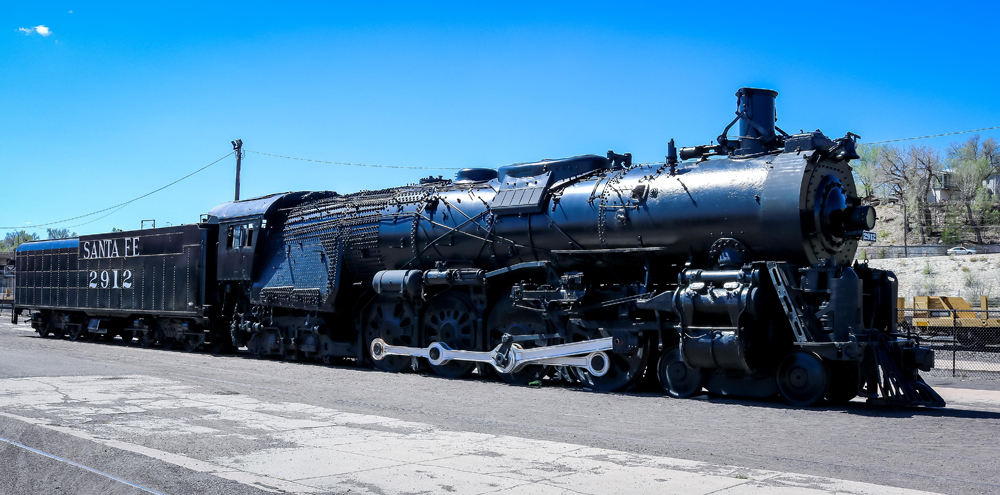
The other big partnership was with the Hoosier Valley Railroad Museum. HVRM owns C&O #2789, the final C&O Kanawha built and the one of only five built with a completely welded boiler, and began an operational restoration on it a number of years ago, as a kind of rainy day project. The #2789 was chosen because they already had it, it had been overhauled in 1955 and run only sparingly in 1956 and was reported to be in excellent shape, and C&O ran through North Judson, IN. They even went as far as ordering all-new flues and tubes, but never got to installing them. The museum board was not really all that big on the idea, since it was still going to be a pricey overhaul, the #2789 was rather big for their operation, and there were already two other Van Sweringen Berkshires operating in the area (Pere Marquette #1225 and NKP #765). While the museum's official stance is that they are "waiting funds for restoration", the reality is that there hasn't been any mechanical work in over 15 years and it's really just a cosmetic refresh. C&O #2716 was in need of new tubes and flues, since they expired in 1996, and they had been prepared to order a set in 2019, but then Covid and supply chain issues sent availability plummeting and prices skyrocketing. So the KHSC has purchased the unneeded flues off of the HVRM, which also represents a considerable savings in time and money.
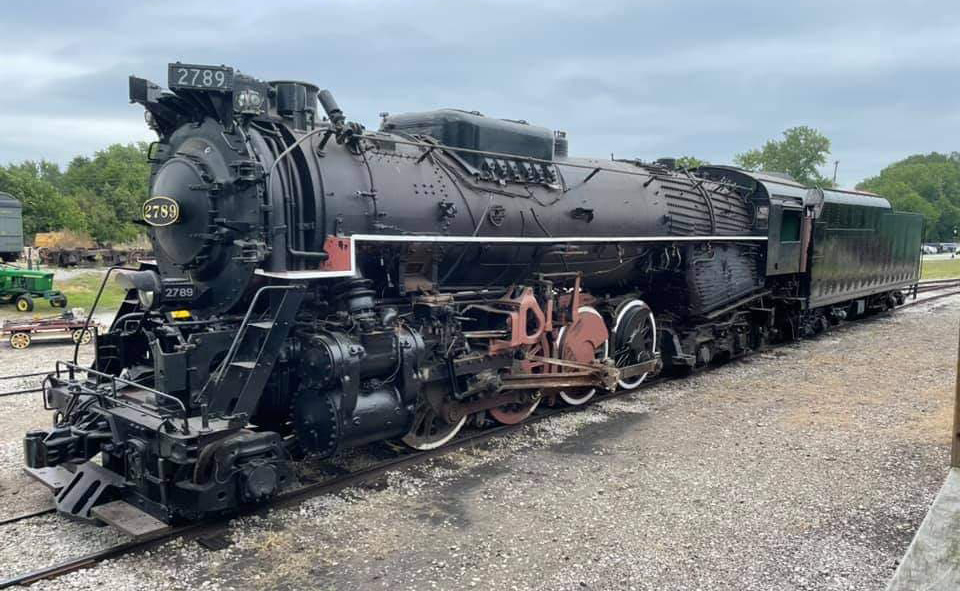
I am quite excited for #2716 to be returned to operation, since the Kentucky Steam Heritage Corp has already announced that they have inked a deal with the Railroad Museum of New England as the #2716's first place of operation. It gives the #2716 someplace to operate where it can stretch its legs over the Naugatuck Railroad's 19.6-miles of trackage, and it gives the RMNE some more steam experience. The folks at RMNE have said that they would love to run steam locomotives regularly, but the only suitable engine in their collection is CP #1246, which has the nickel steel boiler cracking issues that CP G-5 Pacifics had and the firebox is wasted from Steamtown USA's dead-cold-to-250psi-in-45-minutes startup procedures.
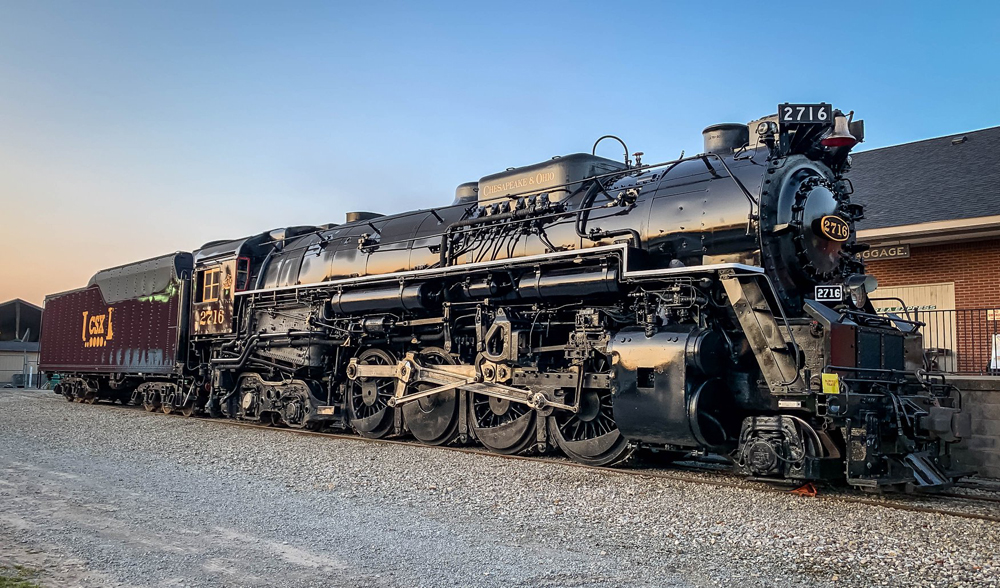
A photo of C&O #2716 at this the Kentucky Steam Heritage Corp.'s open house this weekend. You can see that the sides of the firebox are cut out currently. The #2716 was parked after less than a year of running by Southern due to firebox issues, and Fort Wayne Railroad Historical band-aided it back together and ran it just a handful of times, so it's a good idea to just replace it all and not have the engine repeatedly laid up.

A couple months ago there had been the announcement that Monticello Railway Museum had acquired one of two EMD RS1325s ever built from Larry's Truck & Electric. The RS1325, Chicago & Illinois Midland (now the Illinois & Midland) #31, had been traded in by I&M owner Genesee & Wyoming in exchange for a GP15-1, and the MRyM had moved in and secured it for their museum.
The other RS1325, C&IM #31, was in use on another Genesee & Wyoming line, the Atlantic & Western down in North Carolina. North Raleigh Christian Church Pastor Justin Gillespie of Raleigh, N.C., heard from a former employee that the unit was to be scrapped and posted the news to a local Facebook page, which jump-started the process to save the #31 before a GP38-2 replacement arrived from sister railroad Atlanta & St. Andrews Bay Railroad. Kind of crazy that they would even consider scrapping a 1-of-2-built locomotive, and one that runs at that, but G&W has never been the most sentimental. Employees from the G&W and benefactors at the Illinois Railway Museum jumped into action, and the #31 will be going to Union, Illinois to the Illinois Railway Museum.
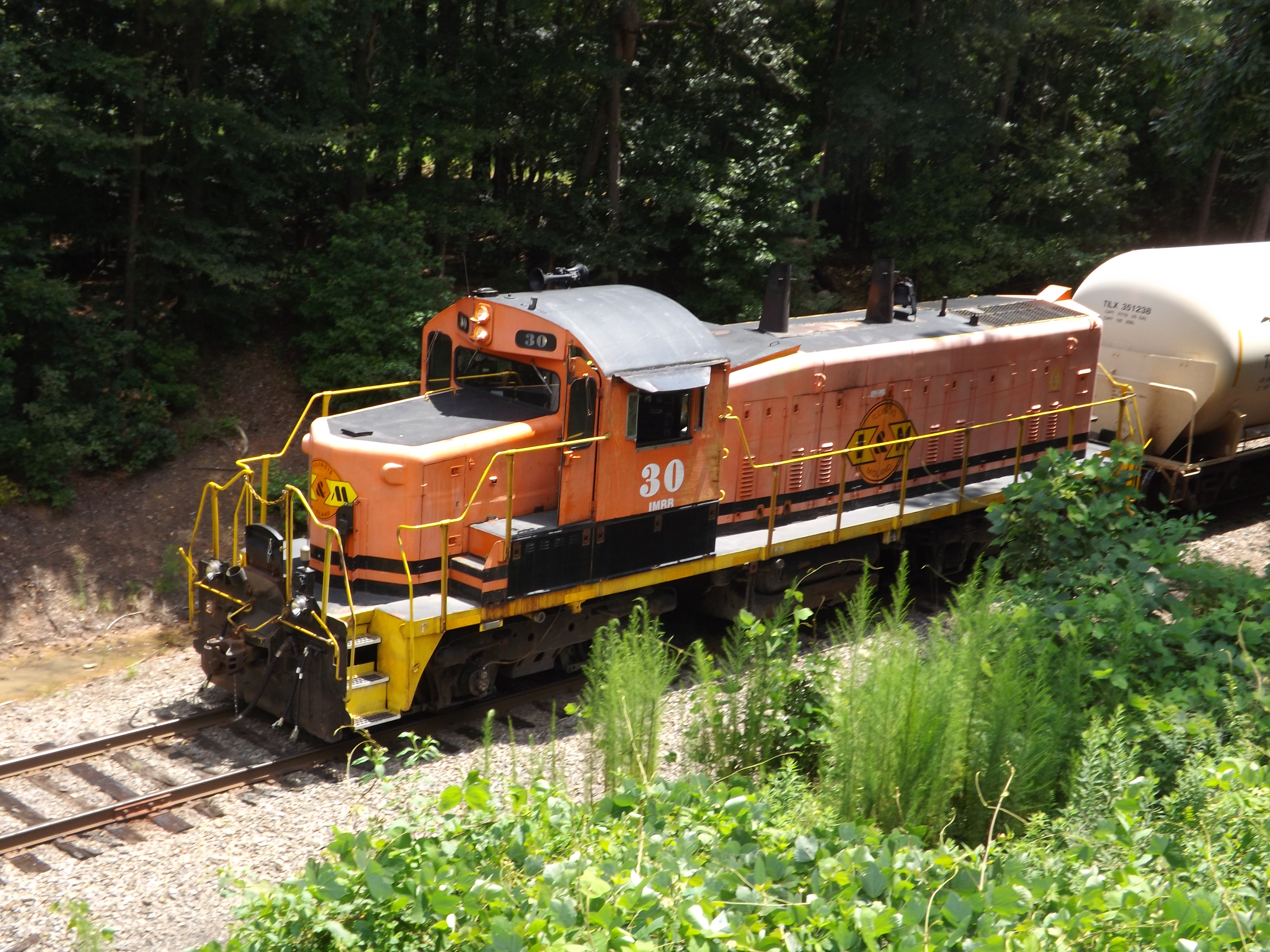
In reply to ReadPenn :
They were an attempt at a light-duty road switcher by EMD for branch line use. It was an SW1200 running gear, punched up to a unique 1325hp, and carbody on a longer frame from a GP9. Behind the cab was supposed to be a high short hood that contained a steam generator. The idea was that it could be used for branch line freight and passenger service, due to the relatively light weight and low power and steam generator, or it could be used as a yard switcher or a passenger terminal switcher, since it could preheat the passenger cars with the onboard steam generator. EMD had previously sold NW2s with added steam generators for passenger terminal switching under the NW3, NW4, and NW5 models, all to middling sales.
The market for passenger terminal switchers had never been particularly strong (7 NW3s, 2 NW4s, 10 NW5s, and ten of Fairbanks-Morse's equivalent H-12-44TSs) and was presumably saturated by that point. Railroads were dumping passenger service as fast as they could, and branch line passenger service was some of the first to go since it had lower profit margins. That left branch line freight service and, as most manufacturers learned, railroads weren't willing to part with cash to buy shiny new locomotives to run on less-profitable branch lines, especially when they had plenty of older locomotives that weren't fit for mainline use anymore.
EMD sold a whopping two to the Chicago & Illinois Midland. Despite the steam generator being a big part of the design, the C&IM was by this point an all-freight railroad (The C&IM had previously run a meager passenger service with the last 4-4-0s built in the US for US usage) and so they optioned theirs without a steam generator. So instead of the high short hood, they had a low short hood that was the same as one from a low-nose GP18. They remained operating on the same rails from 1960 until 2016, at which point G&W, who had purchased the Chicago & Illinois Midland in 1996 and renamed it the Illinois & Midland, moved the #31 down to their Atlantic & Western operations.
I read where one of the A&W engineers said that the RS1325s, due to the light weight and added horsepower tended to be a bit slippery when worked hard. He also said that they discovered that they had apparently never been run particularly hard on the C&IM/I&M, because they had the #31 loaded up pretty good and hit a grade, and he opened the throttle and the stacks were almost completely plugged with carbon. It caught fire inside the exhaust stacks and started bubbling up the paint on the hood, then it began throwing baseball-sized chunks of flaming carbon up into the air and started a couple small brush fires.
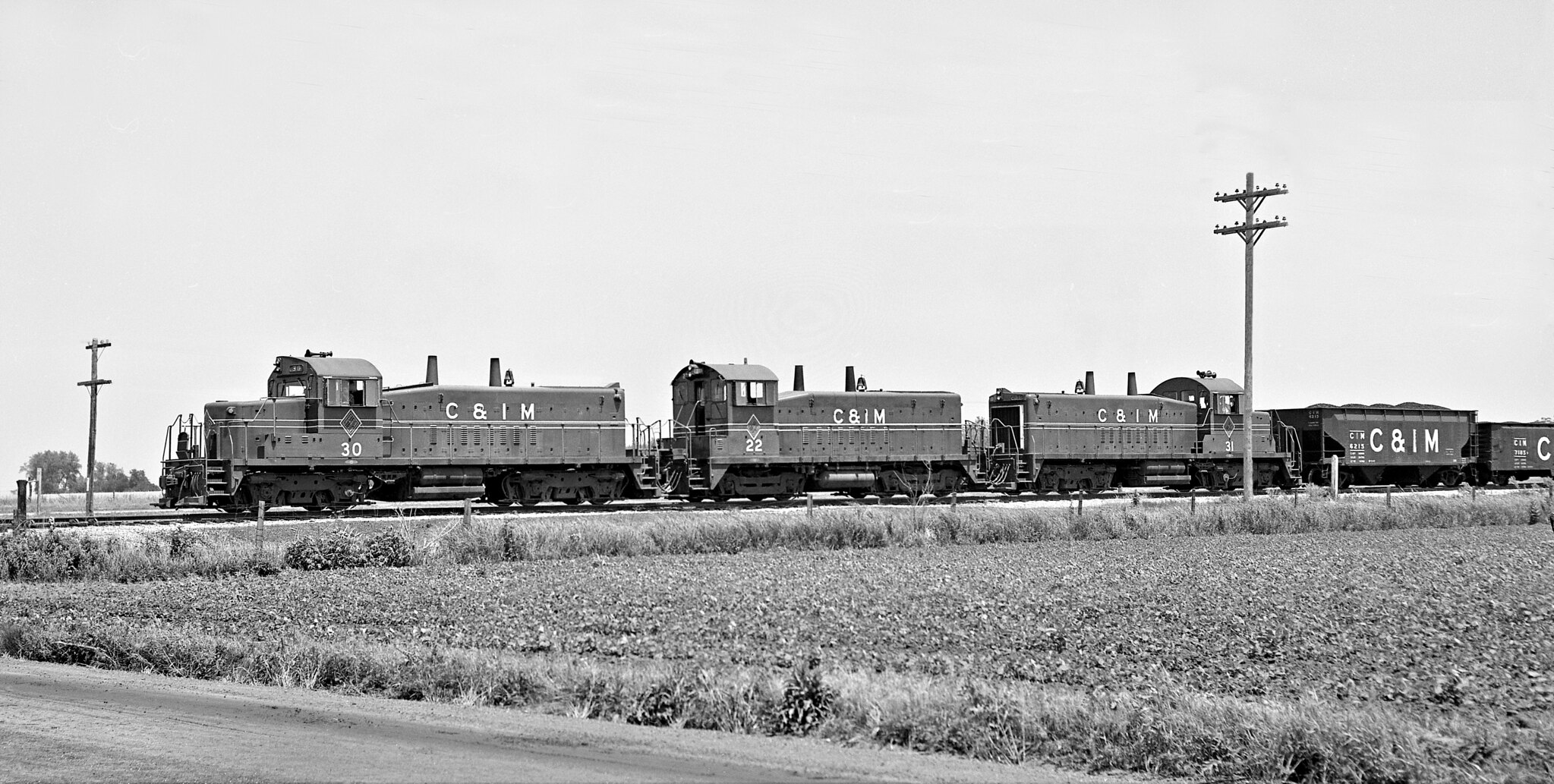

You'll need to log in to post.